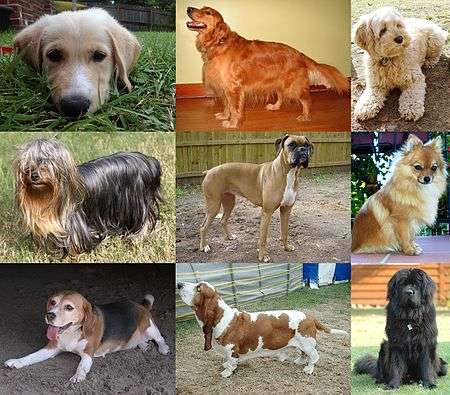Training
The proper training of the canine companion is essential to the coexistence of human and dog. While the task of training a dog or any other pet can seem daunting, the processes for training both everyday behavior and tricks are well established. Many people unfamiliar with dog training believe that it must be difficult, since so few dogs have any modicum of training. In fact, training a dog to be a well-adjusted member of a family is well within the reach of most people.
Dog owners normally train their dogs to be obedient and loving, to do tricks, and sometimes to compete in dog sports. There are multiple schools of thought on dog training, which run the gamut from training based on escape/avoidance to so-called "positive reinforcement" training in which no correction is used. While positive-only methods such as clicker training are currently in vogue, much if not most dog training is still accomplished using some sort of correction at some point in the training process. The single most important factor in dog training is that whatever method is applied is done so consistently.
Dogs can be trained by amateur enthusiasts to compete in obedience trials, various dog sports, for use in hunting, and to serve e.g. on volunteer search and rescue teams or as therapy dogs.
Moving to the professional side, dogs are trained for personal protection, security, police patrol, drug and bomb detection, evidence identification, etc.
Maintenance and medical care

- Choosing a veterinarian
- Dental health
- Grooming
- Nail maintenance
- Nutrition
- Obesity
Surgeries
- Spaying and neutering
- Debarking
- Ear cropping
- Tail docking
Diseases
- How to give medication
- Signs and symptoms
- Fleas
- Heartworms
- Vaccination
- Hookworms
- Roundworms
- Distemper
- Parvovirus
- Lyme Disease
- Rabies
- Tapeworms
- Lupus
Other info
- Breeds
- Socialization
- Training the Search and Rescue Dog
- Dogs care and training
- Canides
- Animal Care Dogs